A couple of scarves with a lot of details today...
First of all, Pierre Marie’s Les Tresors d’un Artiste
The illustration depicts a painter’s traveling case full of tools of the trade, surrounded by related objects such as rolls of canvas, watercolor sheets, porcelain containers, reference catalogues, a jar filled with giant flowers and even a teapot. There is even a nod to Hermes’ equestrian roots in a vase featuring a galloping horse.
The Hermès catalog states, “The composition centers on a very fine piece from the collection of Émile Hermès. This nineteenth-century box of colours doubtlessly belonged to an amateur outdoor painter of the Romantic era - a hiker wandering high and low in search of a subject. The clever, tasteful design incorporates everything a painter needs to commune with Nature. Watercolor tablets, phials of pigment, sealing wax, brushes, charcoal, goose quills, a knife and pocket knife, a scraper, a ruler, a mother-of-pearl and gilded silver paper-cutter, a white marble palette, a cut-glass pestle, miniature dishes and - of course - tubes of paint, a then-recent invention dating to 1841. There is a place for everything in the paint-box’s compartments, drawers and gusset.”
I got lost looking at all the various details... A few others are note cards, a feathered fan, a wooden trinket box, pencils, erasers and buffers, folding eye glasses and a miniature screen.... The perfect

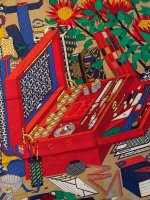
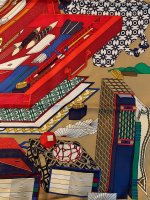

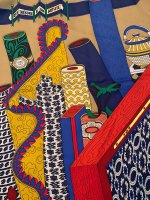
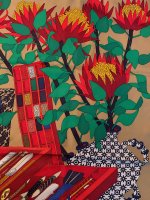
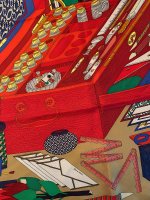
Another design for the week is Collections Imperiales.
At first the design appears to be a harmonious yet complex conglomeration of patterns. But, the design is actually inspired by ancient Chinese cloisonné. The Hermès description of the design states: “Produced in association with the Musée des Arts Décoratifs, this scarf is inspired by the cloisonné enamel designs of China’s Ming (1368-1644) and Qing (1644-1912) dynasties, many of which are preserved in the museum’s archives. Nineteenth-century France showed a pronounced taste for Chinese art, and many important private collections were amassed during this period... The enamel technique known as cloisonné creates motifs outlined by tiny strips of metal forming raised networks covering the decorative surface, to be filled with enamel. Here are floral and geometric motifs, and a galloping horse, that most symbolic animal in the Chinese bestiary, often associated with dragons. This refined, sophisticated composition is a fitting tribute to the extraordinary subtlety of cloisonné work.”
There is a variety of stylized motifs such as horses, peonies and lotus making up the patt


And, this is my “mystery scarf.”
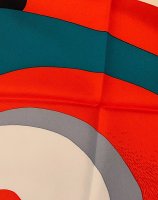
 .
.  forum.purseblog.com
forum.purseblog.com
 .
. 
 The Three Graces CSGM!!
The Three Graces CSGM!! 



 Beautifully styled
Beautifully styled










